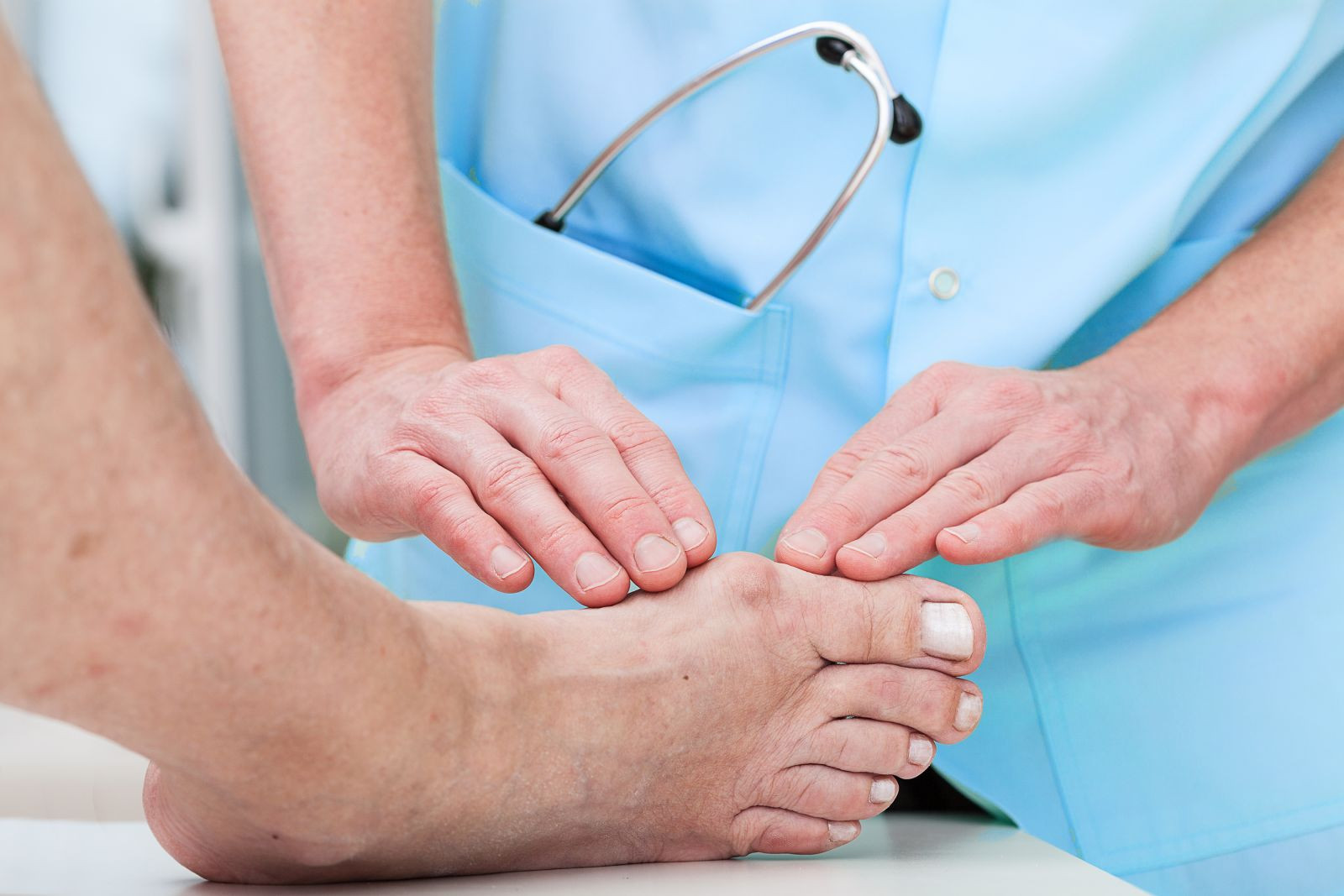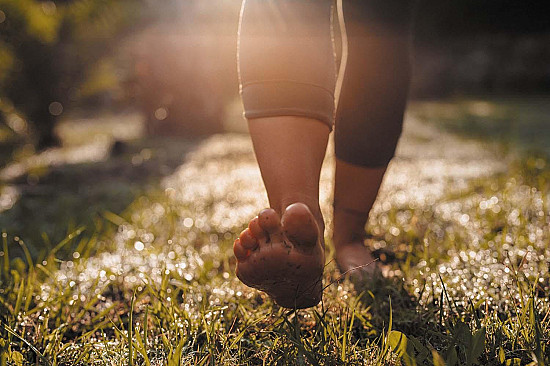What to do about bunions
Painful bunions interfere with walking and exercising, but you can keep them from getting worse.
- Reviewed by Howard E. LeWine, MD, Chief Medical Editor, Harvard Health Publishing; Editorial Advisory Board Member, Harvard Health Publishing

A bunion is a deformity of the metatarsophalangeal (MTP) joint at the base of the big toe. A bunion develops when the first metatarsal bone of the foot turns outward and the big toe points inward (toward the other toes), causing the joint to jut out (see "Anatomy of a bunion"). The Latin name for the deformity is hallux valgus (hallux means big toe, and valgus means turned away from the midline of the body).
Most shoes don't accommodate the resulting protrusion and so put pressure on the misaligned joint. Eventually, the bursa (a fluid-filled sac that surrounds and cushions the joint) becomes inflamed, and the entire joint becomes stiff and painful.
Shoes with narrow toes can trigger a bunion, but they're not the underlying cause. Bunions run in families, because foot type (shape and structure) is hereditary, and some types are more prone to bunions than others. Low arches, flat feet, and loose joints and tendons all increase the risk. The shape of the metatarsal head (the top of the first metatarsal bone) also makes a difference: if it's too round, the joint is less stable and more likely to deform when squeezed into shoes with narrow toes.
High heels can exacerbate the problem because they tip the body's weight forward, forcing the toes into the front of the shoe. This may help to explain why bunions are 10 times more common in women than in men.
People in occupations such as teaching and nursing, which involve a lot of standing and walking, are susceptible to bunions. So are ballet dancers, whose feet suffer severe repetitive stress. Women can develop bunions and other foot problems during pregnancy because hormonal changes loosen the ligaments and flatten the feet. Bunions are also associated with arthritis, which damages the cartilage within the joint.
You may be able to relieve pain and prevent bunions from progressing with conservative measures that take pressure off the MTP joint and improve foot mechanics. Bunions generally don't require surgery unless there's an underlying deformity that can't otherwise be corrected or the pain becomes debilitating despite conservative treatment.
Anatomy of a bunion
Photo courtesy Dr. James P. Ioli A bunion is most likely to develop when susceptible feet are repeatedly squeezed into narrow, pointed-toe footwear. The big toe pushes against the other toes, sometimes diving over or under them. As a result, the base of the big toe — the metatarsophalangeal (MTP) joint — juts or angles out from the foot. To judge how severe a bunion is, clinicians take an x-ray and measure angles between certain bones in the foot, in particular, the hallux valgus angle (HVA) — the angle between the first metatarsal and the big toe — and the angle formed by the first and second metatarsals, called the intermetatarsal angle (IMA). The upper limit of normal for the HVA is 15 degrees; for the IMA, 9 degrees. |
Why bunions need attention
The MTP joint helps us bear and distribute weight during a range of activities. A bunion at this critical junction of bones, tendons, and ligaments can seriously impair the foot's functioning. For one thing, a bunion on the big toe can damage the other toes. Under the pressure of the big toe, they may develop corns or become bent, forming hammertoes. The nails may become ingrown, and calluses may form on the bottom of the foot. If you constantly shift your weight off the painful big toe joint to other metatarsals, you may develop discomfort in the ball of the foot. As the misshapen joint becomes more uncomfortable and harder to fit into shoes, you may have to curtail exercise and other activities. Even walking may become difficult.
Especially in older women, foot disorders are a major cause of disability and sedentary habits. Older women are more likely to have bunions as they get older, and the more severe their bunions are, the lower their quality of life is. You should seek treatment if the pain and deformity interfere with daily routines and physical activity.
Bunion treatment
The first step is to relieve the pressure by wearing the right kind of shoe. (It's also important to maintain a normal weight.) Shoes should have a wide, flexible sole to support the foot and enough room in the toe box (the part surrounding the front of the foot) to accommodate the bunion. Some good choices are sandals, athletic shoes, and shoes made from soft leather. Shoes with a back should have a sturdy heel counter (the part surrounding the heel) to keep the heel of the foot snugly in place. You may be able to reshape narrow shoes with stretchers that make room in the toe box for the bunion. Keep heels low (no higher than an inch).
You can also protect the bunion with a moleskin or gel-filled pad, available at drugstores. (Make sure your shoes have enough space to accommodate it.) A clinician may recommend semisoft orthoses (shoe inserts) to help position the foot correctly as it strikes the ground. You can also wear a splint at night to hold the toe straight and ease discomfort.
When the bunion is irritated and painful, warm soaks, ice packs, and nonsteroidal anti-inflammatory drugs such as aspirin, ibuprofen, or naproxen may help. Whirlpool, ultrasound, and massage may also provide some relief.
If conservative measures fail and you still have pain that interferes with daily activities, you may need surgery to restore the toe to its normal position. Never undertake bunion surgery merely for cosmetic purposes, and never rush into it. You won't necessarily get rid of all your symptoms, and you'll have to stay off your foot for many weeks. Complete recovery can take a year or more, depending on the procedure. As with any surgery, you'll want to make sure the surgeon is experienced in performing the particular operation you've decided to undergo.
About the Reviewer

Howard E. LeWine, MD, Chief Medical Editor, Harvard Health Publishing; Editorial Advisory Board Member, Harvard Health Publishing
Disclaimer:
As a service to our readers, Harvard Health Publishing provides access to our library of archived content. Please note the date of last review or update on all articles.
No content on this site, regardless of date, should ever be used as a substitute for direct medical advice from your doctor or other qualified clinician.
















